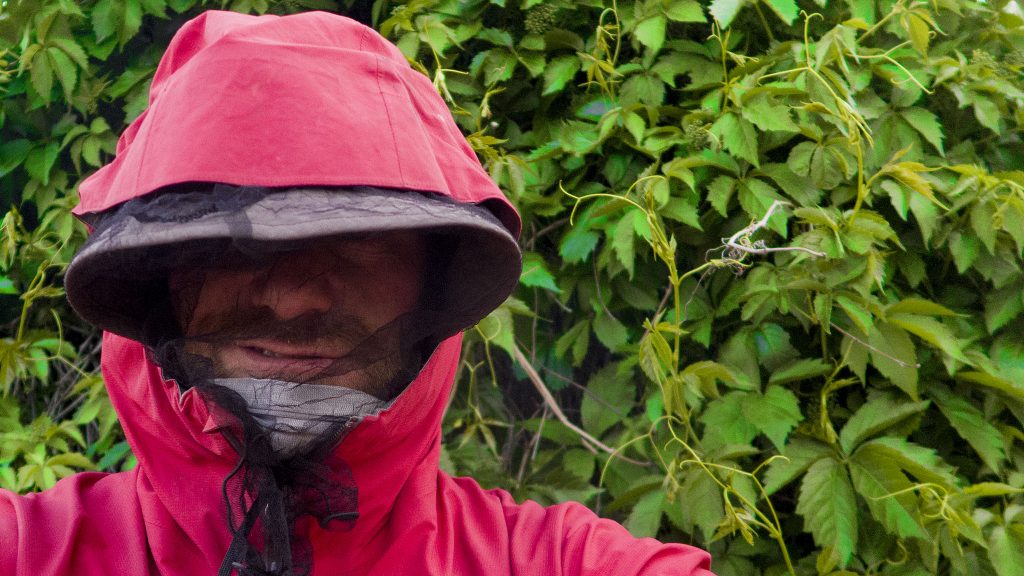OFF TO ALASKA! I’ll guiding two intense trips with the man/myth/legend/my Boulder neighbor of walk-abouts: Andrew Skurka in Gates of the Arctic National Park/Preserve for the rest of the month of May.
Truth be told, what I know about Alaska can be summed up with what I’ve read in Into the Wild, Call of the Wild, Minus 148 Degrees, or watched in Deadliest Catch. So this will be a learning experience for me as well as my clients I’ll be guiding.
I’m beyond excited.
I’m not embarrassed to show a little vulnerability in my knowledge of outdoor quests: I’ve never been even close to Alaska. My job then, is to quickly calibrate my specialized talents to this somewhat new locale.
I already know how to deal with cold, humid, rainy weather – and certainly know mountainous terrain, so I’m very confident these trips will be a complete success. I’ve also guided with Skurka in Sequoia/Kings Canyon National Park in California, and look forward to working with him, again.
Andrew has posted up his own gear list, which also does a good job at setting the stage of what we’re going to expect out there.
Our main goal is to hike most of the day, and make a camp for dinner, sleeping, and breakfast. Throughout the day, we’ll take breaks for workshops, lunch, and perhaps some side quests.
We’ll be so far north, we’re shouldn’t expect much nighttime at all, which may be interesting to see how we all adjust. As I try to think of worst case scenarios, I’m anticipating that every day will be rainy (when it’s not snowing) and we’ll be stuck in a cloud of mosquitos that trails us ever-obediently for the length of our trip. Reality may be a bit more favorable. Maybe.
As our personalities are often completely at odds with each other, so is the way we present our gear lists. Our personality differences work well in the field, and at the very least, it’s good nighttime entertainment.
Although we both are detailed-oriented, Andrew organizes information, while I allow the chaos to reign; Andrew thinks in spreadsheets, I visualize in exploded view diagrams. Andrew will list weights and prices of gear; I’ll list why I chose the gear, and how it makes me feel.
- Clothing Worn When on the Move
- Footwear
- Clothing For When the Weather Gets Real
- Clothing When at Camp
- Backpacks and Backpack Accessories
- Shelter
- Sleep System
- Kitchen
- Hydration
- Navigation
- Tools, First aid, Emergency, & Utility
- It’s Personal
Clothing Worn When on the Move
Hiking Shirt: Royal Robbins Bug Barrier Ultra Light Shirt
Hiking Pants: Royal Robbins Active Traveler Bug Barrier Stretch Pant
These both were two guilty pleasure purchases, but as a guide to group of paying clients, I want to look professional. If I look good, Andrew looks good too. (When backpacking by myself, I just wear what I go running in.)
Like many of my clothes, these are factory treated with permethrin, to attempt to dodge the problem of getting eaten alive.
Underwear: La Sportiva Aeolus Running Shorts (x2)
On a chance of a quick dip in a lake, I’d like to have something more appropriate than underwear to show the world. Running shorts are quick drying anyways, and I’m used to wearing them day in, and day out. I usually don’t have problems with chaffing, and I won’t be bringing any lotions/cremes for that anyways – in a pinch, I can use my roll-on sunscreen for relief.
Sunglasses: Native Eyewear Hardtop Ultra Polarized Sunglasses
I usually shy away from expensive sunglasses, but these have survived me, so they get a free trip to Alaska.
Trekking Poles: Trail Ergo Cork
Simple, survives me.
Footwear
Shoes: La Sportiva Mutant
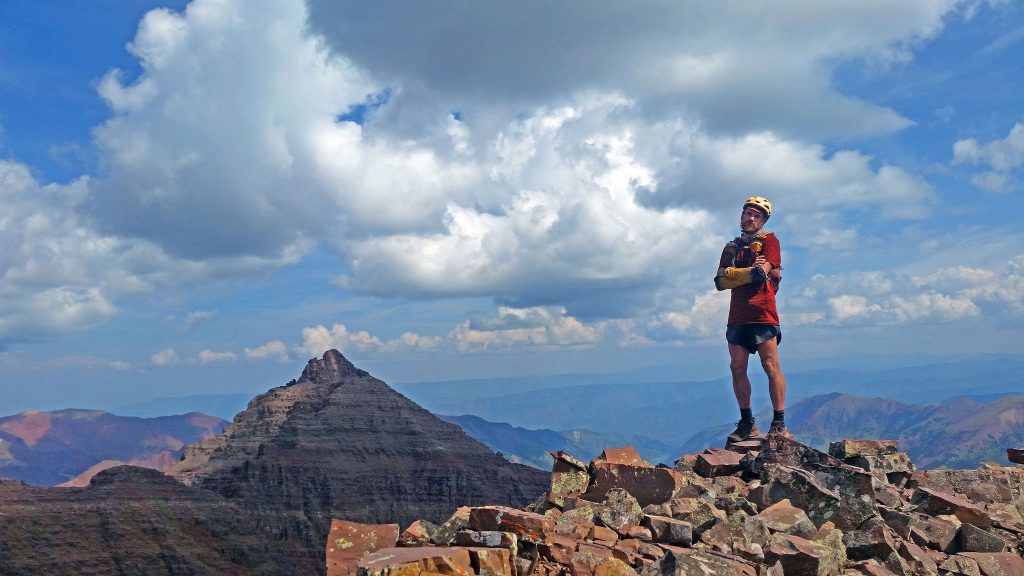
Mutant is all-time for me. It’s proven its worth on trips like my Weminuche, San Luis, Crestone, Sierra Blanca, and Snowmass fastpacks – some of which are good models for the some of the terrain and conditions we may find ourselves in Alaska: off-trail, and wet.
On our guiding trip to the Sequoia/Kings Canyon NP, I brought along the La Sportiva Spire GTX, but a water-resistant shoe is not what I want in swampy conditions. A shoe like that would never, ever dry out, and I’ll be left with wet, unhappy feet. Same issue with another La Sportiva favorite of mine, the Urango GTX. Great shoe; wrong application.
Rather, I’ll bring a few pairs of wool socks to swap out when needed, and rely on the excellent ventilation of the Mutant’s uppers to keep my feet relatively dry while hiking. The outsole is also grippy and chunky, providing good traction for most all route conditions.
Bushidos would also be a great pick, but my wide feet don’t allow me to utilize that as an option. Mutant seems to work.
Gaiters: Kahtoola INSTAgaiter Low
Gaiters keep things out of your shoes. I’m planning on my shoes getting wet, which these gaiters won’t entirely help with, but I also want small stones and whatever else I’ll be hiking in to keep out. La Sportiva Mutant do have a fairly wide opening at the top that seems to invite loose gravel in, which I’d like to keep at a minimum.
What I’d also like to keep at a minimum from myself are bugs/ticks, which is the real reason for these gaiters. I most likely will treat them with a quick coat of permethrin.
I haven’t tried out the Kahtoola gaiters much (so there’s a bit of risk), but I’m intrigued by their simplicity, and convenient zipper design. I’ve had great luck with their hiking crampons, using them for almost all my mountaineering adventures except for something like the Notch Couloir/Longs Peak, and fair amount of luck with their microspikes, so I find it a good risk to take.
I’m a little worried that the silicone strip that goes under your shoe won’t make it too far and will snap off – I’d prefer some sort of nylon or even dyneema material. Some things I can do:
- The Mutant has a flat outsole – so no arch is present where the strap would go around. I’ve had luck in simply cutting that bit of the outsole out to provide a channel for something like this trap.
- I have a ton of found climbing dyneema cord that I don’t trust to use as climbing great, but useful in these types of situations – I’ll see about replacing the silicone strap that comes with the gaiter with my own.
- I can also bring a cheap, lightweight nylon strap or two for a field repair.
I’ll probably be the only one that’s rockin’ the Kahtoolas, as most everyone else will have Simblissity Levigaiters, which already look like I’d destroy upon contact (I’m hard on gear).
Socks: Various Smartwool
I’ll have 2x pairs of hiking socks to switch out of, and a dedicated sleeping sock. I already have a few crew-sized, thin, hiking socks from Smartwool that will work out well. Smartwool is fairly local (to me), which gives me warm/fuzzies of supporting a local business, as I am oft to do.
My feet in general aren’t very particular on special care, so I haven’t found I need to find, “The One” sock, although Skurka seems to love his DeFeet – which as clever pun names go, is a peculiar one to finalize on, I think! (ala, “Don’t get DeFeet-ed!”).
Camp Footwear: None
There’s a small chance I’ll bring my New Balance Minimus Road 00’s from the Born to Run era on the trip as camp shoes, but I really don’t they’ll make the cut.
Clothing For When the Weather Gets Real
Shell Top: Outdoor Research Foray
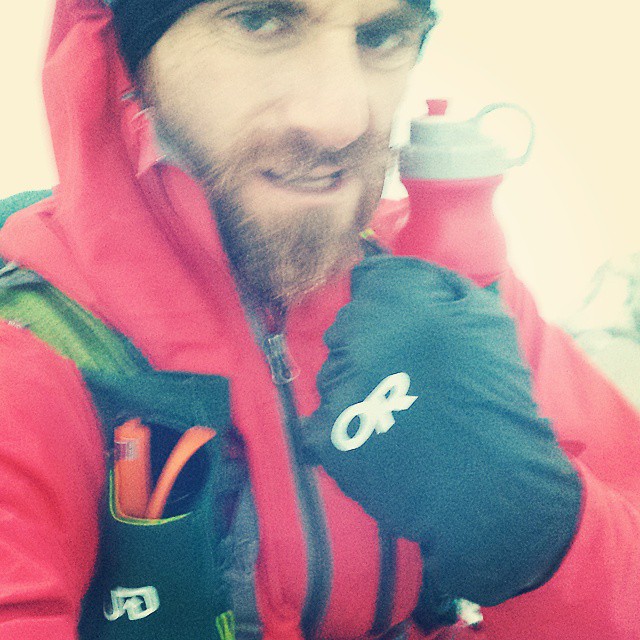
I’m anticipated days of all-day drizzle. If that happens or not, I want to be prepared, so I’m not cutting corners on my rain jacket to keep warm and somewhat happy. This OR jacket is a proven piece both in my experience, and as a clutch in their line.
Alternative: La Sportiva Odyssey GTX
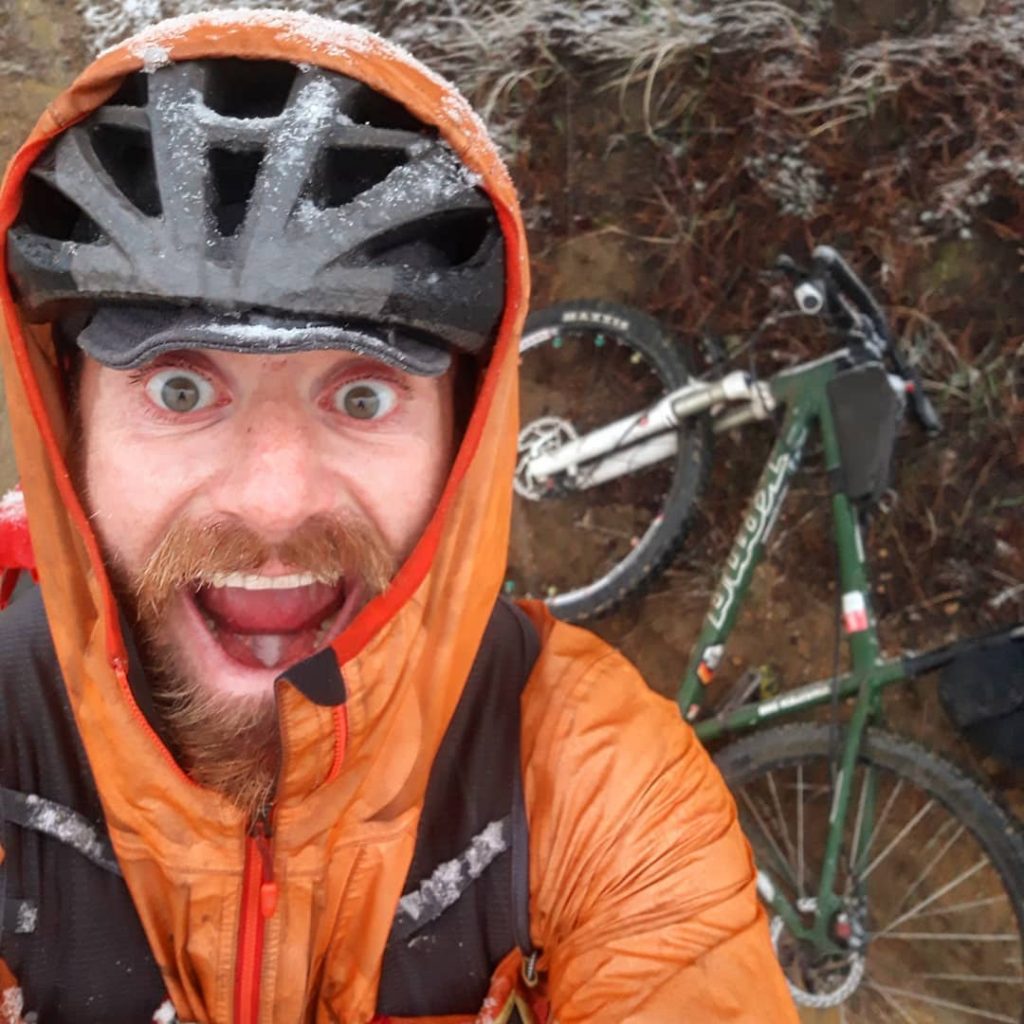
This is my preferred rain jacket – I’ll bring it, but I may want something witha little more teeth for Alaska. What’s great about it is it’s packable size, it’s weight, and that it truly works as rain jacket that keeps you not from getting too sweaty underneath. It’s not very warm, so adding it as a layer while hanging around a campsite doesn’t do too much – it’s truly a, “on the go” piece.
Shell Bottoms: Outdoor Research Helium Pants
Simple, light, waterproof nylon pants (not Goretex). Pack down quite small. Size up, as these run small. Hiking in rain pants isn’t very fun, but needing rain pants, and not having them is worse.
Alternative: REI Co-op Cycles Rain Cycling Pants
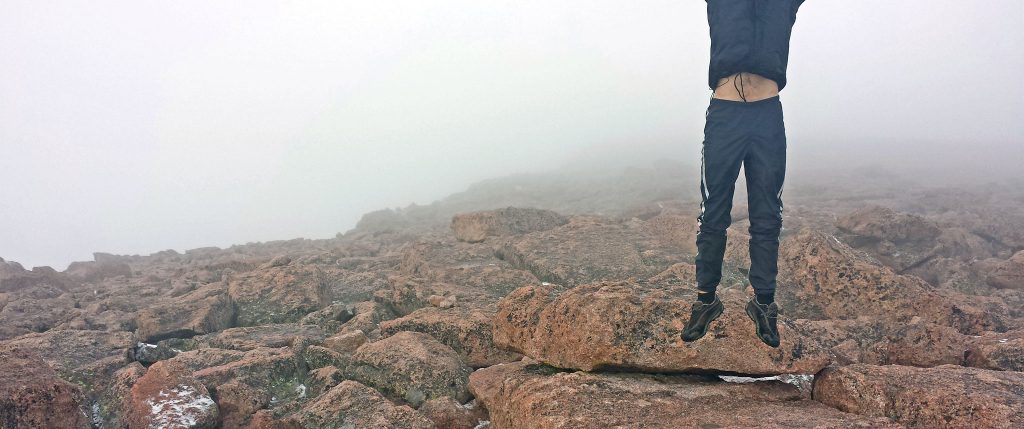
These are heavier pants than the helium, but may be a better fit, if the forecast proves to be… Biblical. The material is Goretex-like, and the fabric is heavier. They’re not going to be as comfortable walking in, as the OR Heliums, but if it’s cold and very rainy, I’ll be taking these, instead.
Mid-layer top: North Face Borod
I’m brining a simple, no-nonsense fleece top, like this one. It’s thin enough where I don’t feel I’ll easily overheat (I run very warm), but not so thin as to be useless.
Hand Protection: Pearl Izumi Full-Fingered Cycling Gloves
I really love these gloves for cycling in cold weather, and it turns out they make great gloves for using with trekking poles, too. I’ll use them mountaineering as well, as they allow me grip an ice axe with confidence, and won’t get chewed up, like a glove liner would – I’m not even allowed to wear glove liners, anymore, as they just get that destroyed.
I’ve also found these gloves to be pretty repairable too – a little bit of sewing – a dab or two of Aquaseal, and they’re ready to be abused yet again. They’re even comfortable in a light rain.
Hand Protection, Waterproof: Outdoor Research Mt. Baker Mitts (shells-only)
The Mt. Baker Mitts with their puffy inner gloves are way overkill for hiking, but the waterproof mitt liner is perfect for terrible downpours. They’re 100% water resistant, are light, and pack down well. There’s sewed on daisy chain segments to attach them to yourself so you won’t lose them as you slip them on and off.
Headwear
I like my hats.
Buff CoolNet UV+ Insect Shield
Like all my clothes, this Buff is treated with permethrin. If you don’t do everything outside without a Buff… what are you doing?!
ExOfficio BugsAway Sol Cool Adventure Hat
This hat is the dorkiest hat I think, I’m actually willing to admit I own, but it’s got some good points to it: It’s another item laced with permethrin, and I’m not taking risks with bug protection. The floppy prim will also cover my ears and neck when I put it under a bug net. I’ll be a dorky lookin’ guy, but I’ll be a relatively bug-bite-on-my-face-free dorky lookin’ guy.
Showers Pass Portland Cap
I’m a life-long cyclist at heart, and wearing a silly petite casquette is my tribe identifier, so I’ll be bringing this along as my hat to wear.
Icebreaker Pocket Hat
A nice, lightweight wool hat – mostly I’ll wear this while sleeping.
Clothing When at Camp
Insulated Jacket: Loki Canyon Puffy
Puffy jackets usually have the characteristic of being on the fragile side of things. This puffy is decidedly not. This will most likely be a, “hanging in camp” piece: the built-in full-fingered gloves(!), and face warmer will work well while waiting for meals to cook. This puffy will get abused.
The generous cut of the piece (and how I sized it up) will feel more like a blanket wrapped around me. And the jacket is warm. If we get hit with unseasonably cold weather, I’ll be feeling mighty fine underneath my rain jacket. The synthetic insulation should work well in the wet conditions I’m anticipating.
Insulated Pants
Although I long for a pair of puffy pants, I’ll be bringing along:
Insulated Compression Tights by 2XU

I usually wear these running in Winter (and everything else in Winter). I’m blasé about compression pieces (I don’t find it personally useful for recovery), and I can usually get this brand on sale easily.
Sleeping Top: Outdoor Research Alpine Onset Ziptop
A nice, light wool piece. Looks good, feels good.
Sleeping Bottom: Patagonia Capilene Mid-Weight Bottoms
Nice, light, feels good, fits underneath my tights, doesn’t stink.
Backpacks and Backpack Accessories
Backpack: Osprey Packs Osprey Pack Atmos Ag 65
This is decidedly a lot of backpack – it’s has more capacity and is heavier than what we suggest for our clients.
It’s certainly not ultralight.
As a pack for guiding a trip, it should work well. I’m actually a fairly big, muscular guy for a backpacker @ 5’11”, 175lbs. I’ll be hauling more items/weight than my clients (shared, community items – and perhaps lightening the load if someone is feeling unwell and I need to get them to camp). I’ll be doing more work and my pack will be on me more than most. I require a comfortable pack that carries weight well, and if it weighs a few more ounces, that’s fine with me – because I do too.
I’m hard on my gear, and sometimes, ultralight gear can’t keep up. Its critical that my pack performs and I don’t run into trouble. This is a pretty conservative choice, but I’m absolutely confident this pack will do its job.
Waterproofing
Brute Super Tuff Bags 20-gallon
Yup: the ol’, “trash compactor bag” trick. Just as its taught in the Skurka Curriculum.
Sea to Summit Stuff Sacks
Knowing the conditions will be wet, I’ll bring along my collection of waterproof drysacks from Sea to Summit, including their eVent stuff sacks, which packs things down amazingly.
Food Storage: Today: Ziplock Bags
Done and done.
Food Protection: Ursack Major XL
Bear Canisters are completely lame, so I’m happy these are allowed in the Park. This is a new item for me, so we’ll see how well it works. Hopefully, will not have to fully test it out with bear raid.
Shelter
Tent: Copper Spur HV UL1 Bikepack Tent by Big Agnes
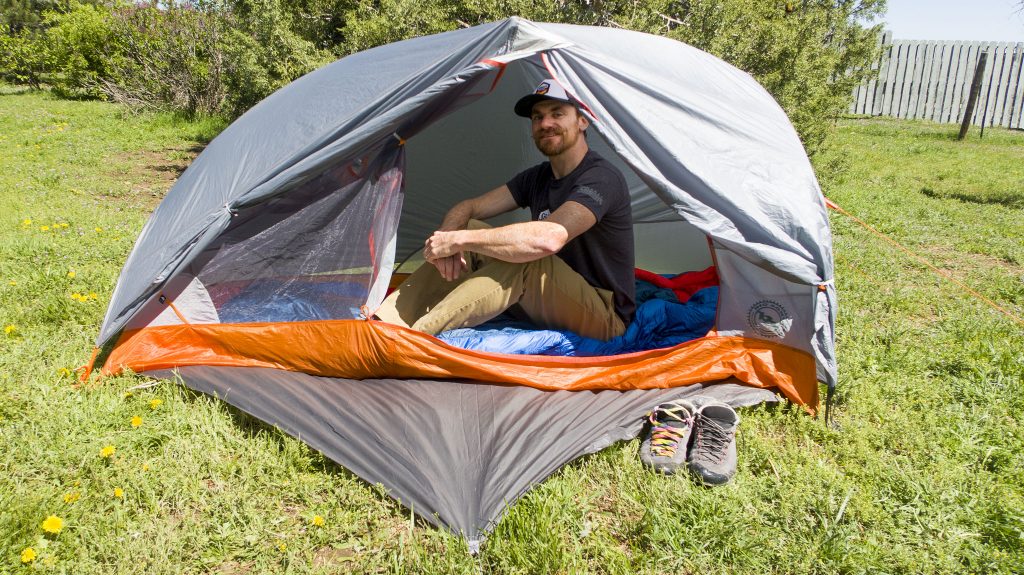
See my full review, here. I’m bringing a tent along, as I want the mesh protection from bugs as I sleep, and the odds that we’ll be enduring rainy nights are great. This will be a great opportunity for me to keep testing out the tent in some pretty extreme environments, and see how it works (and report back)
Sleep System
Both the bag and pad work well as a system with the above tent, and I value that sort of Lego-like design.
Sleeping Bag: Big Agnes Anvil Horn 30
Sleeping Pad: Big Agnes Insulated AXL Air
Pillow: Sierra Designs Animas Pillow
Get a pillow: it’s worth it.
Kitchen
Stove: Trail Designs Caldera Sidewinder Pro
Simple, no-nonsense, lightweight, fast boiling and efficient. Everything I need, nothing I don’t.
Hydration
Bottles: Ultimate Direction Kicker Valve 20 ounce bottle
I don’t think these are for sale anymore, but they’re very similar to a cycling water bottle. I don’t use any of the body bottles all that much.
Water Storage: Hydrapak Seeker
My spidey senses say that sourcing water isn’t going to be a problem in Alaska, but I’ll still need a place to put it all.
Water Treatment, Primary: Aquamira Drops
Water Treatment, Secondary: Sawyer Mini
Navigation
Compass
Tools, First aid, Emergency, & Utility
Light
A small headlamp is nice for nighttime tasks in camp. We usually don’t hike too much during the night on our trips. Being in Alaska at such a high latitude, it’s possible we won’t be using a headlamp at all. Sundown will be at approx. 11:30 pm, and sun up will be at around 4:30 am.
Main: Petzl Actik
The Petzl Actik is small, light, and comes with its own battery pack that can be charged by attaching a micro USB cable to the battery itself. If you don’t have this cable/a way to charge it, you can replace the battery pack from the light itself with three AAA batteries – I’ll probably bring three AAA’s just in case, but I don’t think I’ll run out of juice while in then field.
This will primarily be my camp light. The light itself isn’t very powerful, and doesn’t last very long on a high setting. But, a dim white light is all I need while at camping cooking, and cavorting.
The dimmer, red light that this headtorch also has will also come in handy, as its much more civilized to use while in a close group of people than a white light.
In most of my fastpacking/bikepacking trips, I find this light unacceptably low-powered, but given amazingly long days and the fact that we won’t be traveling by night, it could be just perfect.
Backup: Zebralight H600w Mk IV
(See my full review here). The Zebralight is one of my favorite headtorches, ever. It’s great for long-distance night hiking, and also great for use on your helmet for bike commuting and bikepacking.
It is absolute and utter overkill for hanging out at camp. It also only has a white LED, so no red light support. I’ll carry it as a backup just in case, and perhaps for an emergency situation.
This light utilizes 18650 batteries, which I may bring a single extra one with me in the field. I won’t be bringing any way to charge these batteries in the field, but again: I don’t think I’ll be using the light at all.
Knife: Leatherman Skeletool
I’m taking this right from my bicycle repair kit. In that role, this tool’s knife, pliers, and cable cutters (and that’s it!) are great for switching out disc brake pads, fixing shifter cables, and cutting the odd block of cheese.
While backpacking, it may come in handy for other tasks (while also continuing with cheese-duties), but I’m not expecting to have it out on the ready too too much.
Foot Care Kit: Nothing.
I will won’t be bringing anything, as I’m essentially a mutant, who does not get blisters, ever. Before the trip, I’ll be taking some time to trim up my toe nails short, apply toenail polish, and get any funky fungus issues under control.
Repair Kit
Aquaseal
I could sing the praises of Aquaseal: from fixing a flat sleeping pad, to being a better (if more pricey) alternative to Shoe Goo. If anything needs mending by needle/thread and is going to get wet, I’ll also finish the job by dolloping some Aquaseal on it.
Gear Aid Tenacious Tape Repair Patches
Tenacious Tape alone works well to repair something like a sleeping pad. This tape is backed not by plastic (similar to packing tape), but a round piece of ripstop nylon. When fixing a bad rip in a pad – say one that’s a half an inch wide (usually a haymaker), I’ll slather both the pad and this patch with Aquaseal, let each cure for just a bit, then press them both together and put the stack under some weight (like a few rocks).
If I don’t have to for that, I’ll just slap the patch on and call it good. I like the flexibility.
Needle + Thread
Nothing too fancy.
Satellite Communication: Delorme Inreach Mini
The Inreach Mini has proven itself to me to be a very useful and dependable way to allow people to know where you are, as well as being able to send messages out when you’re in the backcountry.
I’ll be bringing this as a backup to Andrew’s Inreach, as well as his satellite phone. I won’t keep it on all the time, so I won’t have to worry about keeping it charged.
If the unlikely scenario happens, where someone gets injured, and we need to extract the person to the nearest pickup point (basically, a lake where a float plane can pick us up), having two inReaches in the field will be critical in coordinating the rescue.
Firestarter
Mini Pink Bic Lighter
I bought this lighter at the general store at Sequoia & Kings Canyon National Park, and promptly lost it in the rental car, right before our second trip. This trip, I may bring two.
Mylar food wrappers
I’ll be bringing a ton of RX Bars (found them on sale!), and those will make great firestarters.
Power: Anker PowerCore II Slim 10000
I have a lot more electronics than other people on our trip and this size will be a good size to keep things topped out. A 5,000mAh would probably be more than adequate for most people.
Insect Repellent: Sawyer Premium Picaridin Repellent
I detest most lotions on my skin, and have terrible memories of slathering bug spray on my body during humid Connecticut nights. I’ll be bringing this along, with the hope I’ll never need to use it. I won’t take the chance of going without.
Instead, I’ll be using clothing that has been treated with Permethrin.
Headnet: Sea to Summit Mosquito Headnet
Not looking too forward to bust out this haute couture fashion piece. But, it packs down so small and weighs nothing. If we get into a nightmare bug situation, it’ll be a nice ally to have.
Bear Spray: Counter Assault Bear Deterrent Spray
I haven’t used bear spray since Tour Divide in 2012, but having some sort of defense against bears in Alaska seems like a sound idea. I’m actually a little surprised we won’t have some sort of firearm with us, but you know: UL ‘n stuff.
It’s Personal
Usual Items
- Toothbrush
- Toothpaste
- Dental floss
- Contact solution/contact case/extra contacts
- Wet wipes
- Hand sanitizer
I won’t be bringing toilet paper, or deodorant.
Sunscreen: Neutrogena Ultra Sheer Sunscreen (stick)
Even though we’re in Alaska, I’ll be bringing sunscreen. Like most sprays and lotions, it’s not especially comfortable on my very sensitive skin. But I really can’t go outdoors for multiple hours without it. Sunscreen in bar-form seems to be the most convenient and less messy form of sunscreen I’ve found.
Camera: Canon G7X Mark II
This is the camera I’ve used on my adventures for the past year or so – like the Mosquito/Tenmile Traverse:
As guide, my hope is to help capture some of those once-in-a-lifetime moments my clients are having, and be able to share them. I’d like to have a bit of camera to do so, and for me, the G7 Mark II gives me a lot of things to work with.
